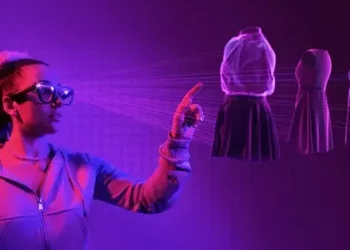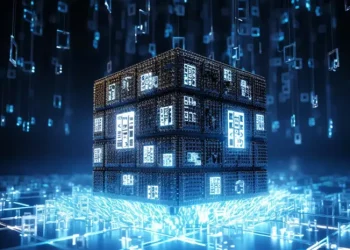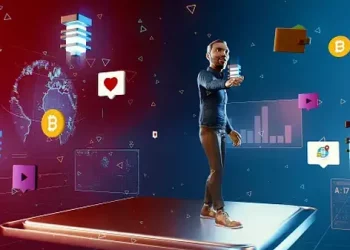The metaverse is an expansive and immersive virtual environment where users can interact with digital spaces, engage in commerce, socialize, and build things just as they might in the physical world. With advancements in blockchain technology, virtual reality (VR), and augmented reality (AR), building things in the metaverse has become a feasible and creative outlet for individuals and businesses alike.
Whether you are an artist, entrepreneur, or simply a curious explorer, the metaverse offers vast opportunities to create virtual worlds, properties, experiences, and assets that can be shared, sold, or used for personal enjoyment. In this article, we will break down the steps and tools you need to start building things in the metaverse, while keeping the process clear and easy to understand.
What Is the Metaverse?
Before diving into how to build things in the metaverse, it’s important to understand what the metaverse actually is. The metaverse is a collective, shared virtual space that is created by the convergence of virtually enhanced physical reality and physically persistent virtual reality. In simpler terms, it is a virtual world where users can explore, create, and interact in real-time. The metaverse exists across various platforms, from video games like Roblox and Fortnite, to more complex ecosystems like Decentraland and The Sandbox, which run on blockchain technology.
The unique aspect of the metaverse is its decentralized nature, meaning that users own their virtual creations and can even sell or trade digital assets using cryptocurrencies and NFTs (non-fungible tokens). As a builder in the metaverse, you are essentially creating a part of a virtual universe that can be monetized or enjoyed by other users.
Why Build in the Metaverse?
The Future of Virtual Creation
Building in the metaverse offers exciting potential for creativity, investment, and digital entrepreneurship. Here are some reasons why building in the metaverse is so appealing:
Creative Freedom : You can design entire worlds, virtual buildings, games, art, or experiences that are limited only by your imagination. The tools available in the metaverse give creators access to design spaces that wouldn’t be possible in real life due to physical or financial constraints.
Ownership of Digital Assets : Blockchain technology allows you to own your virtual creations, from virtual real estate to custom avatars or digital artwork. These assets can be sold or traded as NFTs, providing a unique way to monetize your creative work.
Monetization and Business Opportunities : Many people are turning to the metaverse to open virtual stores, provide services, or sell digital goods. From fashion brands designing virtual clothing to architects creating virtual buildings, the metaverse is full of opportunities for financial growth.
Community Building and Collaboration :The metaverse is inherently social. Building things allows you to engage with communities, collaborate on large-scale projects, and host virtual events, from art shows to virtual concerts.
Future-proofing : As technology advances, the metaverse will likely continue to grow. Being an early builder in this space means you’re positioning yourself at the forefront of digital innovation.
Getting Started: Platforms for Building in the Metaverse
Choosing the Right Platform
To start building in the metaverse, you need to first decide which platform best suits your goals and interests. Several platforms cater to different types of creations, whether you want to build virtual real estate, 3D models, or entire experiences.
Here are some popular metaverse platforms where you can start building:
Decentraland :This Ethereum-based platform allows users to buy virtual land, known as LAND, and build various experiences on it. Using a builder tool, even non-technical users can design virtual spaces such as houses, shops, galleries, and parks. Decentraland also supports NFT-based creations, allowing users to monetize their builds.
The Sandbox : Similar to Decentraland, The Sandbox is a blockchain-based virtual world where users can buy LAND and create digital experiences. The Sandbox offers an easy-to-use Voxel Editor that allows users to build 3D objects like characters, buildings, and vehicles. Assets created can be monetized by selling them as NFTs.
Roblox : While not blockchain-based, Roblox is one of the most popular platforms for virtual creation. The Roblox Studio allows users to create games, virtual spaces, and interactive experiences. Creators can earn money through the Roblox currency, Robux, by selling access to their creations.
Cryptovoxels :This is another Ethereum-based virtual world that lets users build on parcels of virtual land. With easy-to-use tools, you can design 3D structures and sell or rent your virtual creations.
VRChat :While primarily a social VR platform, VRChat allows users to create virtual environments and experiences. The platform supports 3D modeling tools like Unity, so you can build entire worlds for other users to explore.
AltspaceVR : Owned by Microsoft, AltspaceVR focuses on hosting virtual events, but it also allows creators to build custom environments for these events. It’s a great platform if you’re interested in creating experiences like virtual art exhibits, workshops, or seminars.
Learning the Tools to Build
Understanding Design Software and 3D Modeling
Most metaverse platforms come with their own set of tools that allow users to create within their ecosystem. However, to truly unlock your creative potential, it’s worth learning some of the basic software tools that are commonly used in virtual creation. Here are some popular programs that can help you get started:
Unity : Unity is one of the most widely used 3D game development engines, and many metaverse platforms are built on it. With Unity, you can create detailed 3D environments, characters, and interactive experiences. While there’s a bit of a learning curve, Unity offers extensive resources for beginners.
Blender :Blender is a free, open-source 3D creation suite that allows you to model, sculpt, and animate objects in a virtual space. It’s used by many creators in the metaverse to design custom 3D assets like buildings, furniture, and characters.
Voxel Editors (e.g., VoxEdit) : Voxel-based design is commonly used in platforms like The Sandbox. A voxel editor allows you to build structures and characters out of small, cube-shaped units, similar to building with digital Lego bricks.
Tinkercad :This free and easy-to-use online 3D modeling tool is great for beginners. While it lacks the complexity of Blender, it’s an excellent starting point for creating simple 3D assets that you can export to other platforms.
SketchUp : A user-friendly 3D modeling software that allows creators to design detailed architecture and environments. It’s great for building things like houses, cityscapes, and other large-scale structures for the metaverse.
NFT Marketplaces (OpenSea, Rarible) : Once you’ve created digital assets, such as artwork or 3D models, you can mint them as NFTs and sell them on marketplaces like OpenSea or Rarible. These platforms allow you to connect your wallet, upload your creations, and set a price for them.
Steps to Build in the Metaverse
Choose Your Platform
Decide which platform you want to use based on the type of creation you’re interested in. Whether it’s building virtual real estate, creating an interactive game, or designing unique assets, different platforms offer different strengths.
Purchase Virtual Land (If Necessary)
Many blockchain-based platforms like Decentraland and The Sandbox require you to purchase virtual land before you can start building. You can do this through the platform’s marketplace or external NFT markets. Once you own land, you can begin designing on it.
Learn the Tools
Familiarize yourself with the design tools and software specific to the platform you’re using. Many platforms offer builder tools that are accessible even to beginners. For more advanced builds, learning software like Blender or Unity can open up more creative possibilities.
Create Your Design
Whether you’re designing a virtual house, an interactive experience, or a 3D model, take your time to build something that aligns with your vision. Experiment with the tools, test your creations, and don’t be afraid to iterate.
Monetize Your Creation (Optional)
If you want to sell or trade your virtual creations, many metaverse platforms allow you to mint your assets as NFTs. This enables you to sell virtual real estate, 3D assets, or even entire games. You can list these assets on NFT marketplaces and set a price.
Engage With the Community
The metaverse is social by nature, so once your build is complete, share it with others. Invite friends, host virtual events, or list your creation in virtual marketplaces. Engagement helps bring more value to your build and can attract potential buyers or collaborators.
Challenges and Considerations
Building in the metaverse is not without its challenges. Here are some factors to keep in mind:
Technical Skills : While platforms are becoming more user-friendly, building detailed virtual worlds and assets still requires some technical skills, particularly in 3D modeling and game development.
Monetization Complexity : Understanding the economic systems of the metaverse and NFT markets can be tricky. It’s important to research the best practices for selling digital assets and managing your creations in a decentralized space.
Environmental Impact : Blockchain-based platforms consume significant energy, raising concerns about the environmental impact of NFTs and digital assets. Look for platforms that are making efforts to reduce their carbon footprint.
See also: How to Build a Business in the Metaverse
Conclusion
Building things in the metaverse opens up limitless opportunities for creativity, entrepreneurship, and innovation. Whether you’re creating a virtual mansion, designing digital artwork, or building a fully immersive experience, the metaverse provides the tools and platforms to turn your vision into reality. By learning the tools and platforms that make up this new digital frontier, you can become a creator in the virtual world and be part of the future of digital spaces.
Related topics:
How to Create a Character in the Metaverse

















